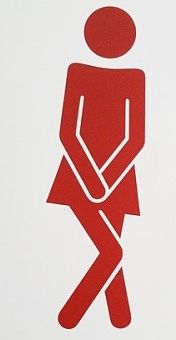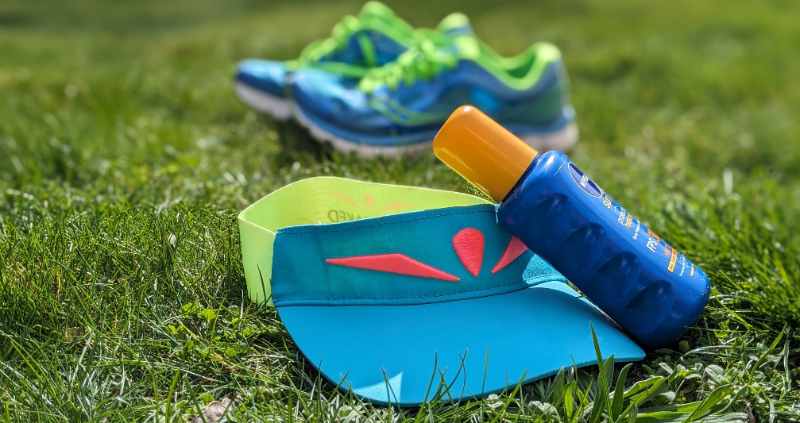Incontinence While Running

Female urinary incontinence while running is not something you often hear people talking about. However, we should be talking about it, as nearly 50% of female runners suffer from some level of urine leakage. Men too can suffer but the incidence is less than half compared to females.
A 2014 study of 112 elite female athletes (57 cross-country skiers and 55 runners) found that 45.54% of the athletes had some leakage of urine especially when doing high impact activities and jumping was the main culprit. Plus the older you are, the more likely you are to suffer.
The sad thing is that 50-90% of sufferers do NOT tell anyone about it. The main reasons being:
- They feel embarrassed.
- They don't know it can be fixed/treated.
- Confusions as it makes them feel 'unhealthy' and yet they are doing sport which is 'healthy'.
Causes of Incontinence while Running
There are 2 main types of urinary incontinence - Urge Incontinence and Stress Incontinence.
- Urge incontinence is when you feel a sudden urge to pee and may struggle to make it to the loo in time.
- Stress incontinence is when you have urine leakage when doing physical exercise. It can also be called exercise induced incontinence and is what runners more commonly suffer from.
Weak pelvic muscles around the bladder and the pelvic area are the main cause of stress incontinence and this is most often caused by:
- childbirth,
- previous pelvic surgery,
- prostate surgery in men,
- being overweight,
- diabetes and
- getting older (especially after the menopause).
Contrary to popular belief, running does not cause stress incontinence but what it does show, is if you have weak pelvic muscles.
In a normal situation, as your bladder fills with urine, it expands. This puts pressure on the urethra valve (the urethra is the tube leading from your bladder to the outside of your body). Normally by using your pelvic floor muscles, you can hold the urine in and choose to pee when you want.
However if your pelvic muscles are weak then you have less control over them and thus may suffer with incontinence while running. Any sudden pressure or force on your bladder and urethra such as when you jump or run fast, causes your urethra valve to open and you leak urine.
Dealing with Stress Incontinence while Running
If you do suffer with incontinence while running, the first thing to remember is that YOU ARE NOT ALONE.
At any club run or race, there will be other women feeling exactly as you do. So do pluck up the courage to mention it to other female runners you know and see how they have dealt with it.
Go and see your GP/Physician. You will definitely not be the first woman that he/she has treated and yes it can be treated.
If the leakage is not too severe, then there is a very good chance that some simple pelvic floor exercices (Kegels) will help enormously. You can do these at home and often you will start seeing results in a couple of months. You can find out how to do these exercises on the internet but it is usually more productive to do them under the guidance of a physiotherapist or incontinence adviser.
If your pelvic floor muscles are considered to be very weak or not responding to pelvic floor exercises, then don't worry as there are other options both non surgical and surgical which your GP/Physician can advise you on.
Look at your diet and weight and see if weight might be a contributing factor to your incontinence while running.
.
Tips to help you keep on running
If you go to any running event you will always see queues of females outside the porta-loos trying to make the decision of "Should I wait or should I go now?" or "Will there be time to go again?"......You can see the stress in their eyes as they are waiting in line.
Also why are there never enough loos? I've been to some events where there have been no loos at all and I've had to squat behind a car/tree or wherever and just close my eyes and pretend no-one can see me - like I did as a child.
Men have it easier in my mind. They can stay modest and stand there with just their backs to us. Us females have to find a slightly more private place and then wrangle with shorts that struggle to go down and which are even worse to pull back up, exposed bums and grass prickling our parts. And then what do you do with the toilet paper. Below are some tips to help you keep on running:
Tips for coping with incontinence while running
- Slow down especially when you are in the early days of doing pelvic floor exercises. I know as runners we don't often like to hear that but slowing down puts less pressure on your pelvic muscles and bladder and this can really help.
- Do more power walking. Power walking is a great way of improving the strength in your hips and glute (buttock) muscles without giving you the stress of high impact movements.
- Wear an absorbant pad and carry spare tissues with you. Not all pads are equal so choose what suits you and what sticks. Being hot and sweaty down there can cause some pads to unstick. Wear knickers (think snug and big) that will hold everything in place.
- Consider wearing a tampon. Even though they don't absorb urine, they do put pressure on the urethra and support the bladder which in turn can reduce wee leaks.
- Choose your running shorts carefully. Tight shorts hold pads more in place but are more complicated to pull up and down. Running shorts with a skirt on the outside are good for hiding any accidents. Don't go for a material that will show up any wet patches. Black is best.
- Empty your bladder just before heading out the door. Take your time to empty it fully rather than rushing it. Squeeze out as much as you can and then try and squeeze out a bit more.
- Some people leak more in certain parts of their menstrual cycle so if that is you then avoid sprint sessions during that time.
- Learn to pee standing up. I have not yet tried this but I have friends who do this all the time. Pull your shorts to one side and pee!
- Cut the caffeine as it is a diuretic (will make you pee) or at least try not have a cup in the few hours before you run.
- Go easy on the fluids during your run but don't get dehydrated. Sip fluids little and often rather than gulping a big amount all in one go. Sipping allows your body more time to absorb the fluids rather than rushing straight to the bladder. Also avoid very cold drinks which often shock the system and gives you an urge to pee. How much fluid should you drink?
- If you do have an accident, just throw some water over you and say "Oops I spilt my drink" ;)
- Bring a change of clothes and wet wipes for after your run.
